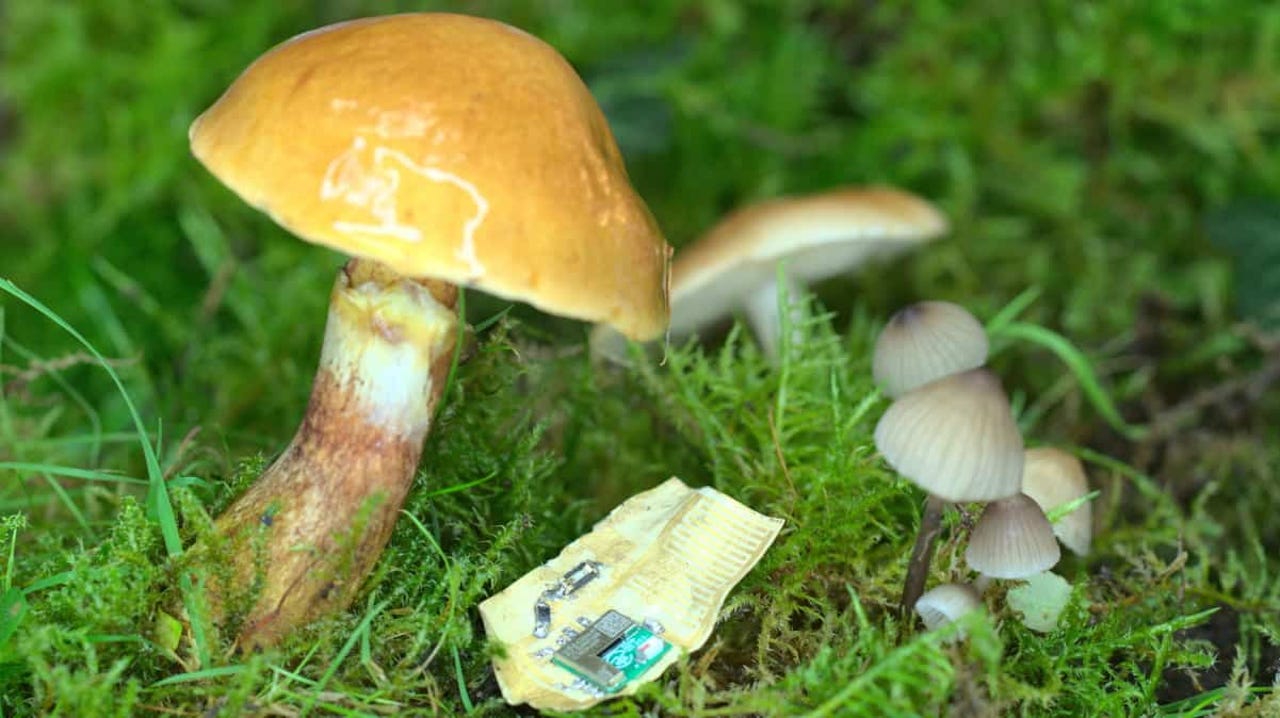
































Researchers at the Johannes Kepler University in Austria have been able to replace unrecyclable plastic in the substrate of electronic chips and batteries with the skin of theGanoderma lucidumspecies of mushroom
Doris Danninger, Johannes Kepler UniversityIn the last few years, mushrooms have become truly magical.
They've become a favorite vegan substitute for leather. You can find high-end mushroom bags and clothing designed by the likes of Stella McCartney and Hermes displayed prominently in trendy boutiques. Mercedes-Benz is using mushrooms to make seat cushions for its upcoming, all-electric EQXX sedan. And hallucinogenic varieties of mushrooms have even been found to significantly alleviate treatment-resistant depression, sparking a revolution in mental-health healing.
Also: How to make tech more sustainable: 5 practical ways to make it happen
Now, researchers at Johannes Kepler University in Linz, Austria have unearthed what might turn out to be the most significant use for this humble fungi yet -- one that could play a pivotal role in mitigating global warming.
A team headed by scientist Martin Kaltenbrunner recently devised a way to use hardy, easily-grown, fungi as a biodegradable base material -- or substrate -- for electronics chips. (Their findings were published in the journalScience Advances.)
Kaltenbrunner has a long-standing obsession with the intersection of sustainability, material science, and engineering. For example, he completed research a few years ago that looked at employing sustainable materials in robotics.
When it came to his latest research, the team looked at the basic building block of all electronic circuits -- computer chips -- with the intention of redesigning the substrate, or the cooling base in which the circuitry sits and which is made of unrecyclable plastic polymers.
Also: How to track your carbon emissions with this new app
These plastics form the second-biggest component (at 37%) by mass in a chip, but are thrown away after use and sit on landfills, leaking CO2 for hundreds of years and contributing to the 50 million tons of e-waste generated every year.
Instead, unlike unrecyclable plastics that use petroleum in their manufacture, the mushroom used for this experiment was the Ganoderma lucidum, which grows on dead hardwood trees, and has a long history of promoting health and longevity in Asia.
The skin this mushroom generated to cover its root-like appendage, called a mycelium, from other fungi and bacteria was of great interest to the team.
Also: 5 ways to keep your smartphone working like new, for longer
When they dried out the skin and put it through its paces, they found it could withstand temperatures of 200
 Hot Tags :
Home & Office
Sustainability
Hot Tags :
Home & Office
Sustainability